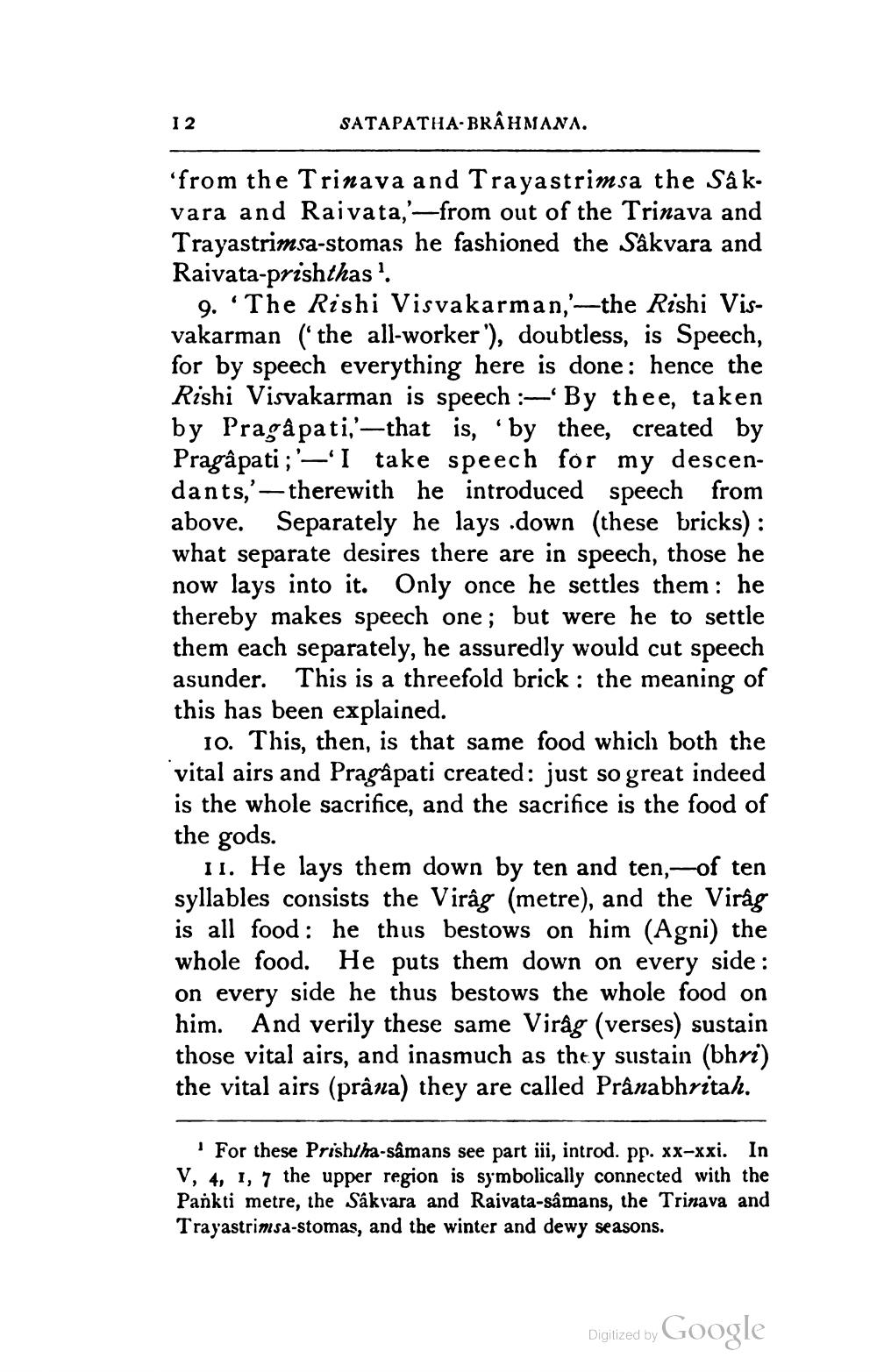________________
I 2
SATAPATHA-BRAHMANA.
'from the Trinava and Trayastrimsa the Sako vara and Raivata,'—from out of the Trinava and Trayastrimsa-stomas he fashioned the Sâkvara and Raivata-prishthas?
9. 'The Rishi Visvakarman,'--the Rishi Visvakarman (the all-worker'), doubtless, is Speech, for by speech everything here is done: hence the Rishi Visvakarman is speech :- By thee, taken by Pragàpati,'—that is, 'by thee, created by Pragâpati; '-'I take speech for my descendants,'— therewith he introduced speech from above. Separately he lays down (these bricks) : what separate desires there are in speech, those he now lays into it. Only once he settles them: he thereby makes speech one; but were he to settle them each separately, he assuredly would cut speech asunder. This is a threefold brick : the meaning of this has been explained.
10. This, then, is that same food which both the vital airs and Pragâpati created: just so great indeed is the whole sacrifice, and the sacrifice is the food of the gods.
11. He lays them down by ten and ten,-of ten syllables consists the Virág (metre), and the Virág is all food: he thus bestows on him (Agni) the whole food. He puts them down on every side: on every side he thus bestows the whole food on him. And verily these same Virág (verses) sustain those vital airs, and inasmuch as they sustain (bhri) the vital airs (prâna) they are called Prânabhritah.
"For these Prishtha-sâmans see part iii, introd. pp. xx-xxi. In V, 4, I, 7 the upper region is symbolically connected with the Pankti metre, the Sákvara and Raivata-samans, the Trinava and Trayastrimsa-stomas, and the winter and dewy seasons.
Digitized by Google




